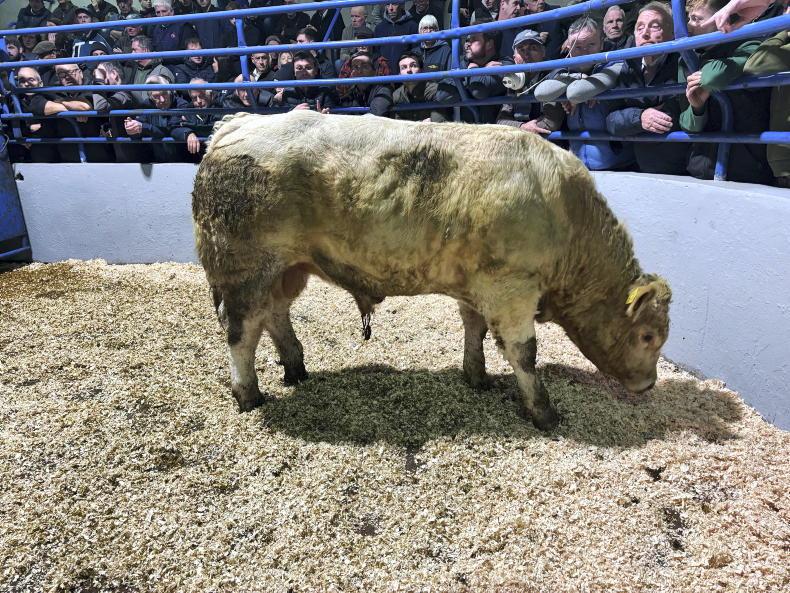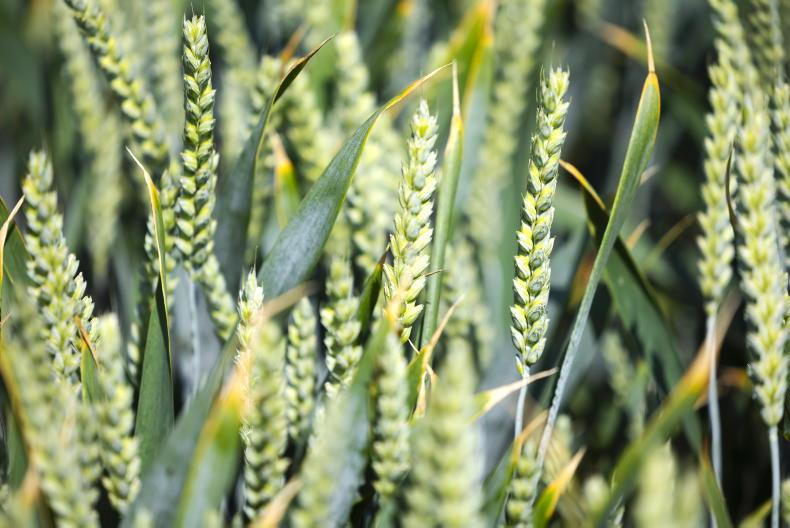If you are planting a new crop into grassland, here are some tips to get you started, from fertiliser to growth regulation.
Many farmers across the country are looking at the option of tillage crops on their farms following the announcement of proposals from the Department of Agriculture, Food and the Marine, to incentivise farmers to grow tillage crops in order to boost animal feed reserves.
Interest in the scheme seems to be high, with farmers mainly looking at the option of cereals or maize. Dairy farmers are reported to be very interested in the scheme.
Farmers planting tillage crops into grassland or fallow will be paid €400/ha where an increase in tillage cropping can be shown on their Basic Payment Scheme application.
While details are still to be finalised on the proposals, the basics are expected to be as follows:
Land must be coming out of grass or fallow.Winter crops will also be included.Cereals, maize, beet, potatoes and oilseed rape are all eligible for payment.Crops must be harvested for grain or for whole crop.Crops will be subject to inspection.Protein crops are not included in these proposals. They fall under the Protein Aid Scheme.Protein Aid Scheme
The Protein Aid payment has been placed at a minimum of €300/ha. As well as beans, peas and lupins, combi-crops will now be included in the scheme. However, payments for combi-crops are expected to be half that of beans, peas and lupins.
Red clover silage is being included in a separate scheme at a lower rate of payment, the details of which are yet to be announced.
Crop diversification requirements
Crop diversification requirements, which require farmers to plant two or three tillage crops depending on the area of tillage they plant, are expected to be waived for 2022.
The Department of Agriculture, Food and the Marine has applied for a derogation from this requirement.
Burning off
Grassland may need to be sprayed off with glyphosate. If it’s been grazed tightly, you might get away without spraying. Crops need to be planted soon, so weigh up your options here. Glyphosate has also increased significantly in price.
Fertiliser
The first thing you need to do is look at your soil tests. Soil pH should be at 6.5 for spring cereals or maize, while beet, beans, peas and oilseed rape will grow best at a pH of 7. We gave some guidance on growing maize and beet in last week’s paper.
Phosphorus (P) and potassium (K) levels would ideally be at index 3, but maintenance levels can be applied. The application rate for P on spring barley at index 3 is 25kg P/ha and at index 3 for K it is 95kg/ha.
Potassium will be very important to help keep the crop standing, so don’t skimp here.
A lot of silage ground is low in K, which can help to strengthen straw, so be cautious when planting into this ground.
Lodging risk after grass
It is important to remember that grassland will provide a lot of nitrogen to crops, so while nitrogen spend will be down, crops are at risk of lodging.
Lodging is when the crop falls over, making it difficult to ripen and harvest, and putting it at at risk of sprouting. Looking at nitrogen rates, fields will fit into two categories when planting after grass.
Tillage farmers follow the nitrogen index system, which varies with different previous crops. Index 4 for nitrogen is a crop sown after very good long leys (five years or more) or permanent pasture which was grazed only.
Spring barley planted into index 4 soils for nitrogen can receive 40kg N/ha, spring wheat can receive 60kg N/ha and spring oats can receive 30kg N/ha.
Index 3 takes in any first or second tillage crop following long leys or permanent pasture. If the original long ley or permanent pasture was cut only index 2 is used.
Spring barley crops in index 3 can receive 75kg N/ha, spring wheat can receive 95kg N/ha and spring oats can receive 60kg N/ha. However, be cautious with high rates as the crop may lodge.
Seed rate
Planting at a high seed rate can help to keep crops standing. Seed rate should be calculated according to thousand grain weight (TGW) and take into consideration the target plant population, time of planting and expected establishment rate. The TGW is printed on the bag of seed.
TGW figures are high this year, in the high 50s for some crops. At an aim of 300 plants/m2 and an establishment rate of 85%, the seed rate would need to be approximately 205kg/ha at a TGW of 58 on spring barley.
Plant growth regulator
Plant growth regulator can help to increase straw strength, but with mixed results on spring barley. Timing is very important here. Moddus or Trinexapac-ethyl can be applied with the first disease spray or before GS33. Terpal can be applied at flag leaf emergence, which is the last leaf to emerge, but this is difficult to target as growth may be quick.
Leather jackets
Grassland carries an increased risk of leather jackets. Rolling is the only real way to tackle this, as chemicals have been taken off the market. Crops like spring oilseed rape may cope better with this risk than spring cereals.
If you are planting a new crop into grassland, here are some tips to get you started, from fertiliser to growth regulation.
Many farmers across the country are looking at the option of tillage crops on their farms following the announcement of proposals from the Department of Agriculture, Food and the Marine, to incentivise farmers to grow tillage crops in order to boost animal feed reserves.
Interest in the scheme seems to be high, with farmers mainly looking at the option of cereals or maize. Dairy farmers are reported to be very interested in the scheme.
Farmers planting tillage crops into grassland or fallow will be paid €400/ha where an increase in tillage cropping can be shown on their Basic Payment Scheme application.
While details are still to be finalised on the proposals, the basics are expected to be as follows:
Land must be coming out of grass or fallow.Winter crops will also be included.Cereals, maize, beet, potatoes and oilseed rape are all eligible for payment.Crops must be harvested for grain or for whole crop.Crops will be subject to inspection.Protein crops are not included in these proposals. They fall under the Protein Aid Scheme.Protein Aid Scheme
The Protein Aid payment has been placed at a minimum of €300/ha. As well as beans, peas and lupins, combi-crops will now be included in the scheme. However, payments for combi-crops are expected to be half that of beans, peas and lupins.
Red clover silage is being included in a separate scheme at a lower rate of payment, the details of which are yet to be announced.
Crop diversification requirements
Crop diversification requirements, which require farmers to plant two or three tillage crops depending on the area of tillage they plant, are expected to be waived for 2022.
The Department of Agriculture, Food and the Marine has applied for a derogation from this requirement.
Burning off
Grassland may need to be sprayed off with glyphosate. If it’s been grazed tightly, you might get away without spraying. Crops need to be planted soon, so weigh up your options here. Glyphosate has also increased significantly in price.
Fertiliser
The first thing you need to do is look at your soil tests. Soil pH should be at 6.5 for spring cereals or maize, while beet, beans, peas and oilseed rape will grow best at a pH of 7. We gave some guidance on growing maize and beet in last week’s paper.
Phosphorus (P) and potassium (K) levels would ideally be at index 3, but maintenance levels can be applied. The application rate for P on spring barley at index 3 is 25kg P/ha and at index 3 for K it is 95kg/ha.
Potassium will be very important to help keep the crop standing, so don’t skimp here.
A lot of silage ground is low in K, which can help to strengthen straw, so be cautious when planting into this ground.
Lodging risk after grass
It is important to remember that grassland will provide a lot of nitrogen to crops, so while nitrogen spend will be down, crops are at risk of lodging.
Lodging is when the crop falls over, making it difficult to ripen and harvest, and putting it at at risk of sprouting. Looking at nitrogen rates, fields will fit into two categories when planting after grass.
Tillage farmers follow the nitrogen index system, which varies with different previous crops. Index 4 for nitrogen is a crop sown after very good long leys (five years or more) or permanent pasture which was grazed only.
Spring barley planted into index 4 soils for nitrogen can receive 40kg N/ha, spring wheat can receive 60kg N/ha and spring oats can receive 30kg N/ha.
Index 3 takes in any first or second tillage crop following long leys or permanent pasture. If the original long ley or permanent pasture was cut only index 2 is used.
Spring barley crops in index 3 can receive 75kg N/ha, spring wheat can receive 95kg N/ha and spring oats can receive 60kg N/ha. However, be cautious with high rates as the crop may lodge.
Seed rate
Planting at a high seed rate can help to keep crops standing. Seed rate should be calculated according to thousand grain weight (TGW) and take into consideration the target plant population, time of planting and expected establishment rate. The TGW is printed on the bag of seed.
TGW figures are high this year, in the high 50s for some crops. At an aim of 300 plants/m2 and an establishment rate of 85%, the seed rate would need to be approximately 205kg/ha at a TGW of 58 on spring barley.
Plant growth regulator
Plant growth regulator can help to increase straw strength, but with mixed results on spring barley. Timing is very important here. Moddus or Trinexapac-ethyl can be applied with the first disease spray or before GS33. Terpal can be applied at flag leaf emergence, which is the last leaf to emerge, but this is difficult to target as growth may be quick.
Leather jackets
Grassland carries an increased risk of leather jackets. Rolling is the only real way to tackle this, as chemicals have been taken off the market. Crops like spring oilseed rape may cope better with this risk than spring cereals.










SHARING OPTIONS